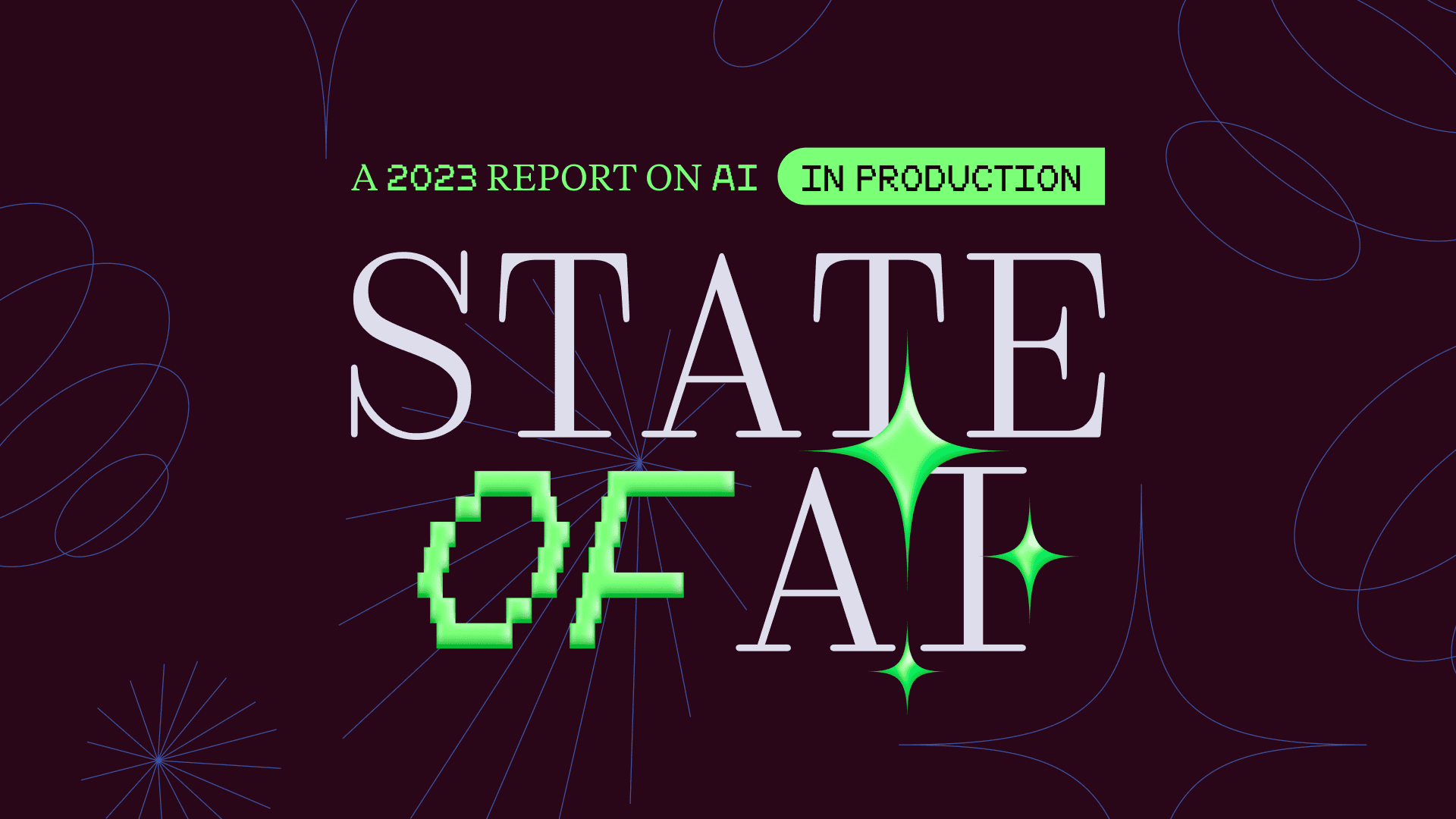You can't scroll down a digital road right now without tripping over AI. Not since the days of crypto, fidget spinners, and the Mannequin Challenge has the internet been so collectively obsessed with a shiny new trend.
But the hype about AI is real. AI and the core large language models (LLMs) being deployed have become pivotal to the web in the space of just ~18 months. GPT-4, Gemini, Claude-3, Llama-2, Mixtral, and countless others have fueled huge interest in generative AI. Almost all industries are looking to build applications based on these models.
To do so, developers need more than just the models. MLOps, data management, and vector databases are crucial components in the AI application stack. Vector databases, in particular, play a vital role in enabling efficient search, retrieval, and similarity matching of high-dimensional data, such as text embeddings generated by LLMs.
Just like models, you now have a vast array of options to choose from—Retool Vectors 🙂, Pinecone, Chroma, and Qdrant to name just a few. How are you going to choose which vector db best suits your needs? It comes down to your specific use case and each database’s performance, functionality, and cost-efficiency.
But first, let’s take a look at why you might pick a database specifically for vectors.
Vectors are mathematical representations of objects in a high-dimensional space. In the case of LLMs, they’re mathematical representations of words, capturing complex relationships and patterns within language. LLMs look for similarities between vectors to decide how to construct the output for any given input.
Traditional databases just don’t play well with this type of data. They aren’t well-suited for these high-dimensional vectors for a few reasons:
- High dimensionality. Vectors in AI often have hundreds or thousands of dimensions, making them difficult to store and process using conventional database structures designed for low-dimensional data.
- Similarity search. The primary operation performed on vectors is similarity search, which involves finding the most similar vectors to a given query vector. Traditional databases are optimized for exact matching or range queries, not for the nearest neighbor searches required for vector similarity.
- Scalability. Machine learning applications often deal with massive datasets containing millions or billions of vectors. Traditional databases struggle to scale efficiently to handle such large volumes of high-dimensional data.
- Specialized indexing. Efficient similarity search on high-dimensional vectors requires specialized indexing techniques, such as approximate nearest neighbor (ANN) or inverted indexes. Traditional databases do not natively support these indexing methods.
- Performance optimization. Vector operations, such as similarity calculations and vector aggregations, are computationally expensive. Vector databases employ dimensionality reduction, quantization, and hardware acceleration to optimize performance for these specific workloads.
To address these challenges, specialized vector databases have emerged. Vector databases have begun gaining prominence as they’re purpose-built to handle the unique characteristics and requirements of high-dimensional vector data. They scale better, use advanced indexing techniques, and are tailor-made to integrate with machine learning pipelines.
If you are X building Grok, you probably need to consider scalability as part of your vector database. If you are building an internal AI tool for your company, this may be further down your list of must-haves. It’s nice to have all the bells and whistles—but it’s often better to have the bell you need and leave the whistling to others.
For instance, building a real-time recommendation engine for an e-commerce website might require a high QPS (queries per second)—e.g., 500+ QPS—to provide instant product suggestions to millions of users. This is how Amazon or Netflix rely on vector databases to power their recommendation systems and deliver results in milliseconds.
But if you’re building a fraud detection system for a financial institution, you might prioritize low latency (e.g., sub-100 milliseconds) to analyze real-time transactions and prevent fraudulent activities. This is how banks and credit card companies use vector similarity search to compare new transactions against known fraud patterns quickly.
Work backward from the specific business use case you plan to solve. The use case defines several aspects of the data, including its size, frequency, data type, scale, freshness, and the nature of the underlying vector embeddings stored in the vector database. Depending on the use case, these vectors may be sparse or dense and span multiple modalities.
Additionally, careful planning and scoping of the use case also help you understand other crucial aspects, such as the number of users, the number of queries per day, the peak number of queries at any given instant, and the users' query patterns.
When evaluating vector databases, performance is the most critical factor to consider. Performance encompasses vital aspects, including query latency, throughput (queries per second), scalability, and accuracy (things you’ve likely been considering if starting with your use case!). These metrics directly impact the user experience and the overall efficiency of your AI application. Let's dive deeper into each of these performance factors.
Query latency refers to the time it takes for a vector database to process a query and return the results. It is typically measured in milliseconds (ms). Low query latency is crucial for applications that require real-time responses, such as chatbots or recommendation engines. For example, a conversational AI assistant should provide near-instantaneous responses to maintain a natural flow of conversation.
Throughput, often expressed as queries per second, represents the number of queries a vector database can handle per second. High QPS is essential for applications that experience high traffic or need to serve many concurrent users. For instance, a popular e-commerce website might need to handle hundreds or thousands of queries per second during peak periods.
Scalability refers to a vector database's ability to handle increasing data and query volume without significant performance degradation. It encompasses horizontal scalability (adding more machines to distribute the workload) and vertical scalability (expanding the capacity of individual machines).
In vector databases, scalability is measured regarding the number of vectors that can be stored and searched efficiently. Some vector databases can scale to billions of vectors while maintaining acceptable query performance. For example, a large-scale image retrieval system might need to store and search through millions or billions of image vectors.
Elasticity, a related concept, refers to a vector database's ability to scale resources up or down based on the workload automatically. Elastic scaling ensures that the database can handle sudden spikes in traffic without manual intervention, making it suitable for applications with variable or unpredictable workloads.
Accuracy in vector databases refers to the quality and relevance of the search results returned for a given query. It measures how well the database can identify and retrieve the most similar vectors to the query vector. High accuracy is crucial for applications where the relevance of the results directly impacts the user experience, such as content recommendation systems or semantic search engines.
Vector databases employ various algorithms and indexing techniques to achieve high accuracy, such as k-nearest neighbors (kNN), approximate nearest neighbors (ANN), or locality-sensitive hashing (LSH). These algorithms trade off speed and accuracy; the choice depends on your application's requirements.
Precision, a related metric, refers to the proportion of retrieved results relevant to the query. High precision indicates that the vector database returns mostly relevant results, minimizing false positives. For example, high precision in a document similarity search application would mean that most retrieved documents are similar to the query document.
Let's consider a real-world example to illustrate the importance of performance in vector databases. Suppose you are building a content recommendation system for a large online media platform. The system must recommend articles, videos, or podcasts to users based on their preferences and viewing history.
In this scenario:
- Low query latency is crucial to providing quick recommendations as users navigate the platform. High throughput (QPS) is essential to handling concurrent users and delivering real-time recommendations.
- Scalability is essential as the media library grows over time, and the system must handle increasing users and content vectors. The vector database should be able to scale horizontally or vertically to accommodate the growing data and query volume without significant performance degradation.
- Accuracy and precision are critical to ensure that the recommended content is relevant and engaging to users. The vector database should employ efficient algorithms and indexing techniques to identify the most similar content vectors based on user preferences and behavior.
While performance is critical in choosing a vector database, functionality is equally important. A vector database's functionality refers to its capabilities beyond basic storage and retrieval of vectors. These functionalities enhance the vector database's usability and versatility, enabling more sophisticated and efficient AI applications.
Metadata plays a crucial role in organizing and querying vector data efficiently. Vector databases that support filtering based on metadata allow you to narrow down the search space and retrieve relevant results faster. Metadata can include timestamps, tags, categories, or other relevant attributes associated with the vectors.
When a vector database supports metadata filtering, you can combine similarity search with specific criteria to obtain more targeted results. For example, in an e-commerce recommendation system, you should filter product vectors based on metadata like brand, price range, or customer ratings. By applying these filters, you can quickly retrieve the most similar products within a specific category or price range, enhancing the relevance of the recommendations.
Integration capabilities refer to a vector database's ability to integrate seamlessly with existing data and engineering infrastructure. In most organizations, vector databases must work with other systems, such as data storage, data processing pipelines, machine learning frameworks, and the final application. Smooth integration ensures that the vector database can be easily incorporated into the overall architecture, minimizing disruption and accelerating time to value.
When evaluating vector databases, consider their support for various integration points:
- Data integration. The vector database should provide efficient methods for ingesting and updating vector data from different sources, such as data lakes, data warehouses, or streaming platforms.
- Machine learning integration. The vector database should integrate with popular machine learning frameworks and libraries, such as TensorFlow, PyTorch, or scikit-learn.
- Application integration. The vector database should offer well-documented APIs and client SDKs to facilitate integration with application servers and frontend frameworks.
Cost can be a significant consideration when selecting a vector database. While performance and functionality are essential, evaluating the cost-efficiency of the vector database solution in relation to your specific use case and budget is crucial. Vector database pricing models vary, and understanding the factors influencing the cost is essential for making an informed decision.
Factors affecting cost:
- Data volume. The cost of a vector database often depends on the number of vectors stored and the total data size. Some pricing models charge based on the number of vectors, while others consider the storage capacity consumed. Estimating the expected data volume and growth rate is essential to determining the long-term cost implications.
- Query volume. Many vector databases charge based on the number of queries or API calls. The pricing may vary depending on the type of queries (e.g., similarity search, metadata filtering) and the complexity of the search operations. Consider the expected query volume and patterns to assess the query-related costs.
- Data transfer. Some vector databases may charge for data transfer in and out of the system. If your application involves frequent data ingestion or retrieval, data transfer costs should be taken into account.
- Compute. The cost of a vector database can also depend on the compute resources required to process queries and perform similarity search. Some pricing models charge based on the number of CPU cores, GPU instances, or memory allocated. Evaluate the compute requirements of your application and the associated costs.
Suppose you are building a recommendation system for a small e-commerce startup with a limited budget. The system needs to store and query a moderate number of product vectors and serve recommendations to a growing user base.
In this scenario, you would evaluate vector database options based on their cost-efficiency:
- Data volume. Estimate the number of product vectors you expect to store initially and the growth rate over time. Look for a vector database offering affordable data volume pricing and scalability options to accommodate future growth.
- Query volume. Consider the expected number of recommendation queries per day or month. Evaluate the pricing models of vector databases based on the query volume and choose one that aligns with your budget and expected usage.
- Managed services. Given a small startup's limited resources and technical expertise, consider opting for a managed vector database service. While it may come with additional costs, it can save time and effort in deployment, maintenance, and scaling.
- Cost optimization. Explore cost optimization techniques provided by the vector database provider. For example, they may offer data compression or efficient indexing methods to reduce storage and query costs without significantly impacting performance.
Finally, you have to think about how well the database you choose will align with the needs and priorities of your key stakeholders..
The C-suite will want to know whether the database meets your organization's specific security and compliance requirements, such as SOC2, GDPR, HIPAA, or ISO. You’ll also have to evaluate the vendor's availability guarantees and SLAs and assess the quality and responsiveness of their support.
For the people working on the ground with the vector database, developer experience is equally important, as it directly affects its adoption and implementation. A thriving developer community, such as an open-source community on Slack or Discord, can provide valuable support, knowledge sharing, and collaboration opportunities. Smooth onboarding, facilitated by well-documented APIs, SDKs, and clear demos, can significantly reduce the time to build.
A final factor to consider is the vector database provider's product roadmap. Vector databases are an emerging technology that must evolve continuously alongside the advances in generative AI models, chip design and hardware, and novel enterprise use cases across domains.
That means the vector database vendor should show the potential for evaluating long-term and future industry trends such as sophisticated vectorization techniques for a wider variety of data types, hybrid databases, optimized hardware accelerators for AI applications such as GPUs and TPUs, distributed vector databases, real-time and streaming data-based applications, and/or industry-specific solutions that might require advance data privacy and security.
If you’re building your AI pipeline, infrastructure such as vector databases can be critical to success. These tools take the building burden off your team and let you concentrate on the business logic of your application that needs AI.
Several vector database companies, including Retool, have emerged to build this foundational infrastructure. While there’s no single “best” vendor of vector databases—determining what’s right for your purposes is highly contingent on your organization’s business goals—a data-driven approach guided by the factors here can help you find the best fit for your organization.
Want to take a vector database for a spin today? Sign up for Retool and check out Retool Vectors.
Reader



